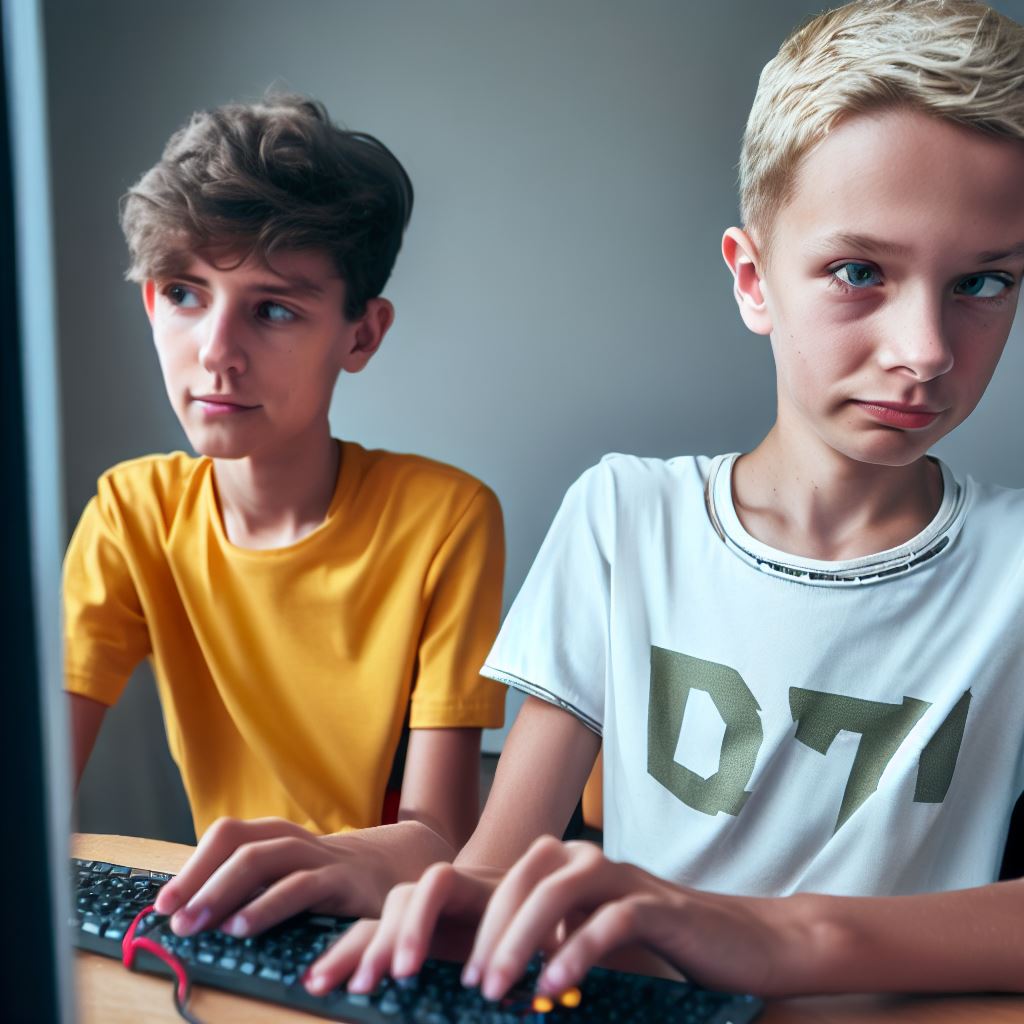Scratch vs. Python: Which is Best for Young Coders?
Last Updated on September 25, 2023
Introduction
Importance of Coding for Young Learners
Coding has become an essential skill in the digital age, and introducing it to young learners is paramount.
It equips them with problem-solving abilities, fosters creativity, and opens doors to numerous career opportunities.
In today’s interconnected world, coding is a language that empowers children to understand and shape the technology that surrounds them.
It encourages logical thinking and helps them grasp complex concepts at an early age.
Moreover, coding cultivates perseverance and a growth mindset as young coders learn to overcome challenges, one bug at a time.
It instills the confidence to explore and innovate in a technology-driven society.
Brief Overview of Scratch and Python
Two popular programming languages for young learners are Scratch and Python.
Scratch is a block-based programming language developed by MIT.
It uses a drag-and-drop interface that simplifies coding by stacking colorful blocks.
Python, on the other hand, is a text-based programming language known for its simplicity and versatility.
It’s widely used in the industry, making it a valuable skill for the future.
Both Scratch and Python offer distinct advantages.
Scratch is beginner-friendly, ideal for kids as young as 8, and focuses on visual programming.
Python, while slightly more challenging, provides a bridge to real-world coding and can be introduced to children around 10 or older.
This blog post explores the features, benefits, and considerations of Scratch and Python, helping parents and educators make an informed choice for young coders’ learning journeys.
Read: Coding Classes for Kids: What Age is Right to Start?
Scratch
Scratch is a beginner-friendly programming language created by the MIT Media Lab.
It provides a visual programming interface that allows users to create interactive projects.
Description of Scratch and its Features
Scratch offers a user-friendly visual programming interface that makes coding accessible for young learners.
It allows them to create projects by dragging and dropping coding blocks.
Benefits of Using Scratch for Young Coders
- User-friendly visual programming interface: Scratch’s interface is designed to be intuitive and easy to navigate, making it ideal for beginners.
- Drag-and-drop coding blocks: Scratch uses blocks of code that can be easily manipulated and combined, eliminating syntax errors common in text-based languages.
- Engaging and interactive projects: Scratch allows young coders to create games, animations, and interactive stories, keeping them motivated and excited about learning.
Examples of Projects that can be Created with Scratch
With Scratch, young coders can create a wide range of projects. Here are a few examples:
- Interactive games that involve animation, sound effects, and scoring systems.
- Animated stories where characters move and talk, bringing narratives to life.
- Simulations that allow users to experiment with various scenarios and observe the outcomes.
- Artistic creations such as virtual instruments, digital paintings, and dancing characters.
Basically, Scratch is a fantastic programming language for young coders.
Its user-friendly interface, drag-and-drop coding blocks, and engaging projects make it an ideal choice for beginners.
With Scratch, young learners can unleash their creativity and develop essential coding skills in a fun and interactive way.
Read: Why Every Child Should Learn to Code: A Parent’s Guide

Python
Python is a versatile and powerful programming language that is highly recommended for young coders.
It provides numerous benefits and can be used to create a wide range of projects.
Description of Python and its features
Python is a high-level programming language known for its simplicity and readability.
It is designed to be easy to understand and write, making it an ideal choice for beginners.
With its clean syntax and straightforward structure, Python allows young coders to grasp the fundamental concepts of programming quickly.
Benefits of using Python for young coders
Python offers several advantages that make it the best programming language for young coders:
1. Powerful and versatile programming language
Python’s extensive libraries and frameworks make it a powerful tool for developing various applications.
From web development to data analysis, Python can handle a wide range of tasks, providing young coders with endless possibilities for exploration and learning.
2. Widely used in professional software development
Professionals widely use Python, one of the industry’s most popular programming languages, for software development.
Introducing young coders to Python at an early stage can give them an advantage in the job market in the future.
3. Provides a solid foundation for future learning
Python’s simplicity and readability make it an excellent starting point for young coders.
By mastering Python, they can easily transition to other programming languages and concepts, fostering their growth as well-rounded coders and problem solvers.
Examples of projects that can be created with Python
Python’s versatility allows young coders to create a wide variety of projects. Some examples include:
1. Game development
Python’s libraries, such as Pygame, enable young coders to create their own games.
They can implement game logic, graphics, and interactivity, unleashing their creativity in the process.
2. Web development
Python’s frameworks like Django and Flask empower young coders to build web applications.
They can create dynamic websites or even develop their own blogs and online platforms.
3. Data analysis
Python’s data analysis libraries, including NumPy and Pandas, allow young coders to process and visualize data.
They can analyze trends, draw insights, and present information using charts and graphs.
4. Artificial Intelligence and Machine Learning
Python’s support for AI and ML libraries like TensorFlow and Scikit-learn enables young coders to explore the fascinating field of artificial intelligence.
They can develop simple chatbots or even train models to recognize images or classify data.
Generally, Python is undoubtedly the best programming language for young coders.
Its simplicity, versatility, and wide adoption in the industry make it an excellent foundation for learning and future opportunities.
Read: 5 Affordable Online Coding Courses for Your Kids
Comparison of Scratch and Python
When it comes to the comparison of Scratch and Python, there are several factors that need to be considered.
These factors include the learning curve, flexibility and complexity, as well as the career prospects associated with each programming language.
Learning Curve
Scratch is known for its ease of use and is particularly suitable for young beginners who are just starting out in coding.
With its visual, block-based interface, learners can easily drag and drop commands to create programs and animations.
On the other hand, Python has a steeper learning curve and requires more effort to grasp its syntax and concepts.
Flexibility and Complexity
Scratch offers user-friendliness and project focus but lacks Python’s flexibility.
Scratch is primarily used for creating interactive stories, games, and animations, making it great for creative projects.
Python’s versatility enables its use in various applications, such as web development, data analysis, and artificial intelligence.
Career Prospects
Using Scratch helps develop logical thinking and problem-solving skills, which are valuable for young coders.
It provides a solid foundation in programming concepts and can be a stepping stone for further learning.
However, Python opens doors to various career opportunities in the tech industry.
Python is widely used and offers a range of job prospects, including software development, data science, machine learning, and more.
Essentially, while Scratch is a great starting point for young coders with its easy-to-use interface and focus on creativity, Python provides a more versatile and powerful programming language with broader career prospects.
Whether you choose Scratch or Python, both languages offer valuable skills and opportunities for young coders to explore the world of programming.
Read: How to Choose the Right Coding Language for Your Child
Conclusion
The decision between Scratch and Python ultimately depends on the goals and preferences of young coders.
Both platforms offer unique advantages, with Scratch providing a user-friendly visual interface and Python allowing for more complex programming.
While Scratch is ideal for beginners to introduce coding concepts and develop problem-solving skills, Python offers a more professional coding experience.
It is important for young learners to not limit themselves to one language and instead explore both Scratch and Python.
By experimenting with both platforms, young coders can gain a broader coding experience and enhance their programming skills.
Ultimately, the choice between Scratch and Python should be based on the individual needs and interests of young coders.
Whether they prefer the creativity and simplicity of Scratch or the versatility and power of Python, young coders will benefit from gaining exposure to both languages.
Regardless of the language chosen, learning to code at a young age opens up a world of possibilities and prepares them for the future of technology.
So, why not encourage young learners to try both Scratch and Python and discover the joys of coding from multiple perspectives?


